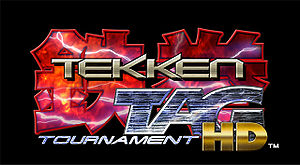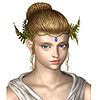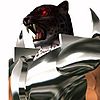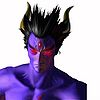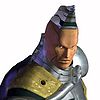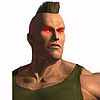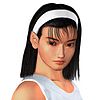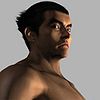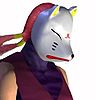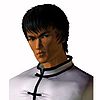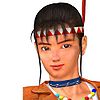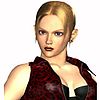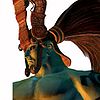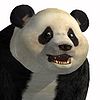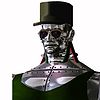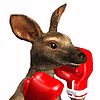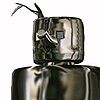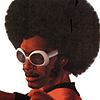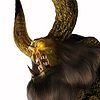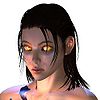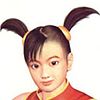Tekken Tag Tournament
| Tekken Tag Tournament | |
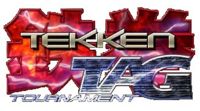
| |
| Platforms | Arcade, Playstation 2 |
| Release Date | Arcade
Playstation 2
|
| Arcade System | Namco System 12 |
| Genre | Fighting |
| Game modes | Single-player, Multiplayer |
| Predecessor | Tekken Card Challenge |
| Followed By | Tekken 4 |
| Official site | http://www.bandainamcogames.co.jp/am/vg/tekken-tt/ http://www.bandainamcogames.co.jp/cs/list/tekken_tt/index.php |
Contents
Development & Release
Tekken Tag Tournament (also abbreviated as TTT) is the fourth game in the Tekken series and was listed as the 23rd best game on the PS2 by IGN in the year 2007. It was the first game to incorporate several features, the most obvious being the Tag System. The Tag system allowed a player to select two characters that form a tag team; the selected characters are able to fight against other tag teams which could be AI controlled or two characters controlled by another player in Versus Mode. It is however still possible to play 1-on-1 versus fights.
Tekken Tag Tournament also incorporated a new variable known as endurance, which was never featured again. Additionally, it created the basis of the Tekken 6 Rage System through the presence of Netsu Power.
The game features 40 characters, which was the largest character roster for a Tekken game before Tekken 6.
Upgrades & Ports
Tekken Tag Tournament HD is a remastered version of Tekken Tag Tournament, was released on December 1, 2011. The game came on the same Blu-ray Disc as Tekken: Blood Vengeance and is accessible if the disc is loaded on a PlayStation 3 (the entire package is referred to as Tekken Hybrid). The game is based on the PlayStation 2 version and features updated HD visuals, similar to the God of War Collection or The Sly Collection. The game includes Trophy support.
Reception
Tekken Tag received positive reviews with critics. GameSpot giving it a 9.6 out of 10. It has an aggregate score of 85 on Metacritic. IGN gave it an 8.7 out of 10 praising its graphics and character moves. In 2007, IGN listed Tekken Tag Tournament as the 23rd best game on the PlayStation 2.[7] As of 2008 PSM states Tekken Tag is regarded as the best installment in the series. In an article by GamePro Tekken Tag Tournament was praised for its visuals stating such things as, "The fighting backgrounds were also astounding-especially Eddy Gordo's stage where you could see individual blades of grass!"[8]
Story
Tekken Tag Tournament is not a part of the Tekken canonical storyline. This allowed Namco to bring back the characters that did not appear in Tekken 3 (such as Baek Doo San, Bruce Irvin, Jun Kazama, Kunimitsu, and Michelle Chang). The ages of the characters in this game are the same as the ages that they had in the last game that they were in.
Because Tekken Tag Tournament is a non-canonical game, it has no story. It is more of a compilation of Tekken, Tekken 2, and Tekken 3, allowing players to use almost every character in the Tekken series. The only characters that did not return from previous games are the first King, Marshall Law, the first Jack robot, the first Kuma, Gon, and Doctor Boskonovitch (although Dr. Boskonovitch does make a cameo appearance in Tekken Bowl).
Tekken Tag Tournament also introduced two new characters, Tetsujin and Unknown. Tetsujin is a "pallette swap" for Mokujin. Unknown is the final boss of Tekken Tag Tournament. Both of these new characters are "mimic" characters. Tetsujin never returned to any game in the Tekken series, but Unknown returned - once again, non-canonical - Tekken Tag Tournament 2.
Gameplay
Tekken Tag Tournament, being the first Tekken title for the PlayStation 2, featured vastly detailed graphics and improved quality music. It was also notable for having the largest character roster in the series until the release of Tekken 6, boasting an extravagant 40 characters, all returning from the previous installments in the series, with the exception of Unknown, the boss character, and Tetsujin, a costume swap for Mokujin. Unknown is similar to Mokujin in that she can replicate other fighting styles, but she can also switch styles by clicking the right analogue stick. Tetsujin has only appeared in this game. Finally, its most important feature is its tag system. A player selects two characters and may tag out between them to utilize special combos and throws. Characters can be tagged out to recover energy, but if one character is KO'd, the round ends. When in Team Battle mode, the fights are also tag fights unless there is one person left on a team where they will fight alone.
Tekken Tag Tournament included a minigame called "Tekken Bowl", that challenged the player to use a team of characters to play a bowling game. Depending on the player's selected character, different attributes would be placed into effect in the mini-game. For example, Bryan Fury has a powerful roll due to his super strength, and he can use a targeting system to make more accurate shots because of his cybernetic enhancements. A physically weaker character like Xiaoyu would have a much less powerful strike, but would be easier to control when placing the spin and amount of force on the ball. Strong characters who accidentally bowl at the maximum strength find themselves shooting across the lane with the ball still attached.
Modes
This section is empty. You can help by expanding it.
Features
This section is empty. You can help by expanding it.
Roster
Stages
Trivia
- Although Marshall Law did not appear in the game, one of Forest Law's costumes resembles his father's first player outfit from Tekken 2.
- Kunimitsu gained a new costume in this game. It consisted of a purple bodysuit and a golden mask that revealed her mouth. Jun also received a new costume, it consists of a dark green karate shirt with matching gloves, shoes, and dark blue shorts.
- Panda appears in the background of the school stage.
- Regardless of the number of rounds you set the game to, the final fight with Unknown will always be one round.
- The final move that Lei performed in his ending became a usable move from Tekken 4 onwards. This move is listed as the Comet Kick.
- This is the first game in the Tekken series where the character falls into the agony position once K.O'd.
- Many characters have special before-battle and losing poses if they are paired up with certain other characters. For example, Law and Lei would lay down on the floor in a comical fashion if they lost and Nina would kick Bryan in the crotch with them both getting into their fighting stances immediately afterward if they were to lose the match. In before-battle poses, some characters will do things with/to their partner occasionally depending on the leader. For example, when Paul and Kuma are paired, whomever the leader is will do their special attack to the other (Kuma will do his Salmon Fishing move on Paul or Paul will do Phoenix Smasher to Kuma's gut when Kuma is growling) or Heihachi will turn Lee over his knee and spank him if paired together.
- If you have Kazuya Mishima and Devil on the same team, then they will morph into one another instead of tagging out of the fight.
- Unknown is the only character in the game to have a CGI ending (all other characters use the in-game graphics).
- The Tag feature never made it to another non-Tekken Tag Tournament game except for Tekken Advance, featuring 3 character tag teams.
- This was the first Tekken game released for the Playstation 2 and the first ever game released for the console.
- In the PAL version of the game, the booklet has an error. On Jin Kazama's page it has a picture of Kazuya Mishima instead of Jin.
- This is the last Tekken game where all the stages have no walls.
- Tekken Tag is the first Tekken game since the original Tekken to have the same stage music in every character's ending. This is not the case with Unknown's ending, however, as she has different music in hers.
- In Tekken Bowling mode it is possible to K.O Dr. Boskonovitch and the other people watching from the sidelines. To do this, you must move your character all the way to the left and then try to press the X button when the moving cursor is to the left (this works much better with right handed characters). If done correctly you'll hear the announcer say "K.O!"
- Tiger Jackson appears alongside Eddy Gordo in the latter's ending further alluding to the fact that Tiger is possibly not an alter ego of Eddy. However, as Tekken Tag is non-canon, this could just be a surreal ending.
- Ling Xiaoyu is the only character in the game to have two endings. It is viewable by beating Arcade Mode in her school girl outfit. Xiaoyu also has the most outfits with an additional secret green/orange costume, only obtainable by selecting her with a random select.
- Screaming no longer echoes if KO'd.
- There are no replays after every round, but after Arcade Mode, they show replays from the last round and the word "replay" now flashes on the top left of the screen instead of the top right. However, in Tekken Bowl, the word flashes on the bottom left except when a super strike occurs.
- The health meters no longer load up before the fight begins.
Media
Video Gallery
|
Arcade Opening |
Console Opening |
Embu |
Embu 2 |
Image Gallery
- Screenshots
An artwork image of Heihachi Mishima and Jin Kazama.
Notes
| Tekken series | |
|---|---|
| Main series | Tekken • Tekken 2 • Tekken 3 • Tekken 4 • Tekken 5 (DR) • Tekken 6 (BR) • Tekken 7 |
| Tag series | Tekken Tag Tournament • Tekken Tag Tournament 2 |
| Other games | Tekken Card Challenge • Tekken Advance • Death by Degrees • Tekken Resolute • Tekken Hybrid • Tekken 3D: Prime Edition • Tekken Card Tournament • Tekken Revolution • Tekken Arena |
| Crossovers | Namco X Capcom • Street Fighter X Tekken • Tekken X Street Fighter |
| Films | Tekken: The Motion Picture • Tekken (2010 film) • Tekken: Blood Vengeance • Tekken 2: Kazuya's Revenge (2014 film) |
